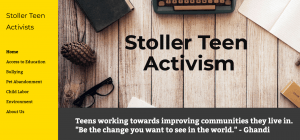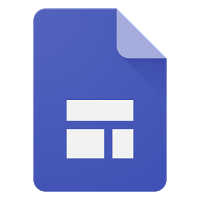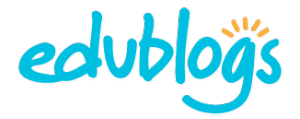 Writing for an authentic audience is essential for student engagement in creative and critical writing. Gone are the days when students wrote for the teacher, submitting hardcopy papers, never to be seen again by readers beyond the classroom walls. Educational apps afford us with capabilities to create, publish, share, and respond like never before, increasing student volume and complexity of writing. Learning design must be thoughtfully considered, choosing an appropriate educational app that meets rigorous learning goals, while blending inquiry-based learning, authenticity, student agency and voice, digital citizenship, and media literacy. Consider the SAMR Model for technology integration in the classroom when selecting apps for publishing students’ writing. A variety of platforms have the potential to transform how learning happens, allowing students to interact with one another in a meaningful way, embed media that is relevant to the writing and conversations at-hand, and connect globally within a community of writers.
Writing for an authentic audience is essential for student engagement in creative and critical writing. Gone are the days when students wrote for the teacher, submitting hardcopy papers, never to be seen again by readers beyond the classroom walls. Educational apps afford us with capabilities to create, publish, share, and respond like never before, increasing student volume and complexity of writing. Learning design must be thoughtfully considered, choosing an appropriate educational app that meets rigorous learning goals, while blending inquiry-based learning, authenticity, student agency and voice, digital citizenship, and media literacy. Consider the SAMR Model for technology integration in the classroom when selecting apps for publishing students’ writing. A variety of platforms have the potential to transform how learning happens, allowing students to interact with one another in a meaningful way, embed media that is relevant to the writing and conversations at-hand, and connect globally within a community of writers.
We must let go of the idea that all published works must be polished, well-developed, and copy edited. After all, entrepreneurs, those holding an innovator’s mindset (explore George Couros’s 8 Characteristics), and design thinkers remind us that rapid prototyping is essential in the creative process. Not only this, but we must allow our students opportunities to increase their volume of writing (Penny Kittle and Kelly Gallagher’s 180 Days), receive timely feedback, and feel a real-world value in their writing beyond a singular audience.
New Google Sites
 What: The NEW Google Sites is much more user-friendly than the original version, making creating, publishing, and editing a web site easy and accessible. Part of the G Suite, the interface allows users to embed previously created content and media through a sidebar panel. Limited by a handful of themes and fonts, users may customize some of the color choices, the orientation of the navigation, as well as images on page banners. Limits in design options help students “new to media” make good visual design choices and focus on the content. It is also important to choose a tool that may transcend a student’s membership to a school organization, so that content may be exported for future use as digital portfolio. Using the Google Takeout option, a student may transfer a Google Site to a personal Google account upon exit from school or graduation.
What: The NEW Google Sites is much more user-friendly than the original version, making creating, publishing, and editing a web site easy and accessible. Part of the G Suite, the interface allows users to embed previously created content and media through a sidebar panel. Limited by a handful of themes and fonts, users may customize some of the color choices, the orientation of the navigation, as well as images on page banners. Limits in design options help students “new to media” make good visual design choices and focus on the content. It is also important to choose a tool that may transcend a student’s membership to a school organization, so that content may be exported for future use as digital portfolio. Using the Google Takeout option, a student may transfer a Google Site to a personal Google account upon exit from school or graduation.
Process: Students begin their writing and research processes on paper and/or Google Docs, using the cycle of the writing process and inquiry-based learning to capture information for their writings. Applying an inquiry-based planning structure that considers technology integration, students naturally use educational apps to build knowledge, think critically, collaborate, gather feedback, create, and publish. Explore this learning design template to consider all the facets of blending inquiry-based learning with educational apps.
Stoller Middle School Student Examples: Ms. Chrisman’s 6th grade students used Google Sites as a platform for publishing students’ Teen Activism information text writing, and Mr. Freiboth’s Grade 7 Science students used Google Sites for publishing research on genetic diseases [Example 1 | Example 2]. (Note: Some student sites are only accessible to Beaverton SD users, which is a technical preference students may choose in publishing their work.)
Resources
- Learning Design Template: Blending Inquiry-Based Learning With Educational Apps [Google Doc] -Note: This template was adapted by me in collaboration with Dr. Todd Cherner from Dr. Todd Cherner and Alex Fegely’s work on blending inquiry-based learning with education apps.
- Sample Learning Design Template – Ms. Chrisman’s Teen Activism Unit with links to resources, writing checklists, rubrics, and more
- New Google Sites – Site Navigation Map – Use this as a graphic organizer for planning the site architecture.
- New Google Sites – A guide to getting started – This guide includes resources for copyright-free images, color pickers, banner sizing, and a checklist for attributing images.
- New Google Sites Media Rubric – It’s important to assess students on both their writing and use of media, pushing students’ critical media literacy skills.
Additional Tools for Publishing Student Writing
 Edublogs – In the early 2000s, I attended an NCTE conference in Baltimore, MD, where I first discovered the power of blogging for book discussions and giving students a voice in developing their own interpretations of literature. A teacher presented there on The Secret Life of Bees and how the author, Sue Monk Kidd, joined Will Richardson’s (former high school English teacher and now educational technology guru and advocate for school reform) sophomore students online in a vibrant and authentic discussion (learn more here). I was smitten with the impact this had on the students and the potential it could have on my own students. Social Media and the Internet affords us with opportunities to connect with authors, literary agents, and editors from publishing houses, like never before.
Edublogs – In the early 2000s, I attended an NCTE conference in Baltimore, MD, where I first discovered the power of blogging for book discussions and giving students a voice in developing their own interpretations of literature. A teacher presented there on The Secret Life of Bees and how the author, Sue Monk Kidd, joined Will Richardson’s (former high school English teacher and now educational technology guru and advocate for school reform) sophomore students online in a vibrant and authentic discussion (learn more here). I was smitten with the impact this had on the students and the potential it could have on my own students. Social Media and the Internet affords us with opportunities to connect with authors, literary agents, and editors from publishing houses, like never before.
Edublogs is powered by WordPress, which embeds loads of technical and media literacy learning opportunities for students. Edublogs also provides a platform for students to have agency over their own digital writing portfolios, selecting their own themes and layouts, within the safety net of a teacher observer, where students accounts can be tied to a teacher account and then linked as a “blogroll” on the teacher’s site. Because Edublogs caters to the education community, teachers can get started with a free account and go “pro” for more advanced features. Edublogs makes the experience user-friendly, managing the technical infrastructure and WordPress updates, as well as providing support guides and a “how to” library for on-boarding students easily, so that the focus is on the learning, not the tool.